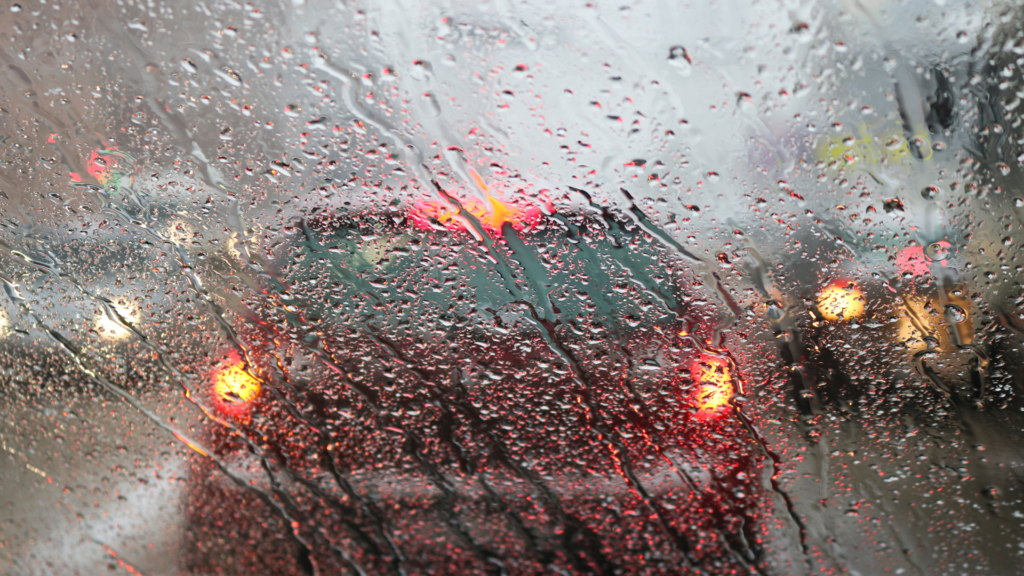Driving in hazardous weather conditions can be a nerve-wracking experience, even for the most seasoned drivers. From icy roads and blinding snowstorms to torrential rain and dense fog, Mother Nature can throw some serious curveballs our way. But with the right knowledge, preparation, and a healthy dose of caution, you can navigate these challenges and arrive safely at your destination.
Ice and Snow: The Most Treacherous Road Hazards
The Federal Motor Carrier Safety Administration (FMCSA) reports that snow and ice contribute to a substantial number of fatal crashes each year.
Black Ice: The Invisible Threat
Black ice, a thin, transparent layer of ice that forms on road surfaces, is particularly dangerous because it is often invisible to drivers. It commonly forms at night or early morning, especially on bridges, overpasses, and shaded areas.
Tips for Driving on Ice and Snow:
- Slow down: Reduce your speed significantly to maintain control on slippery surfaces.
- Increase the following distance: Allow extra space between your vehicle and the one in front of you.
- Brake gently: Avoid sudden braking, which can cause your wheels to lock up and initiate a skid.
- Steer into a skid: If your vehicle starts to skid, gently steer in the direction of the skid to regain control.
- Be aware of black ice: Watch for glossy or shiny patches on the road, which may indicate black ice.
- Practice in a safe environment: Familiarize yourself with how your vehicle handles icy roads in an empty parking lot.
Winter Driving Preparation:
- Winterize your vehicle: Ensure your tires have adequate tread depth, check your battery, and top off fluids, including antifreeze.
- Pack an emergency kit: Include essentials like a blanket, flashlight, jumper cables, and first aid kit.
- Use winter tires or chains: Consider using winter tires or chains for improved traction in snowy conditions.
High Winds: A Challenge for All Drivers
Strong winds can push your vehicle off course, reduce visibility due to blowing dust or snow, and even cause debris to strike your vehicle.
Tips for Driving in High Winds:
- Reduce speed: Slow down to maintain control in gusty conditions.
- Maintain a firm grip on the steering wheel: Be prepared to correct your steering if a gust of wind pushes your vehicle.
- Use headlights: Increase visibility in dusty or snowy conditions.
- Be aware of high-profile vehicles: If driving a truck or SUV, be extra cautious.
- Pull over if necessary: If winds become too strong, pull to a safe location away from trees or power lines.
Rain: A Major Cause of Hydroplaning
Rain reduces visibility and makes roads slick, increasing the risk of hydroplaning, where your tires lose contact with the road surface.
Tips for Driving in Rain:
- Turn on headlights: Increase visibility for yourself and other drivers.
- Watch for puddles: Avoid driving through deep puddles, which can hide potholes or cause hydroplaning.
- Maintain a safe following distance: Allow longer stopping distances on wet roads.
- Avoid cruise control: Maintain control of your vehicle by avoiding cruise control in wet conditions.
Fog: The Silent Danger
Fog can significantly reduce visibility, making seeing the road and other vehicles difficult.
Tips for Driving in Fog:
- Slow down: Reduce speed to allow more time to react to hazards.
- Use low beams: High beams can reflect off the fog, creating glare.
- Use fog lights if available: Fog lights can improve visibility.
- Increase the following distance: Allow extra space between vehicles.
- Consider pulling over: If the fog is too dense, pull over to a safe location and wait for conditions to improve.
Additional Hazardous Weather Conditions
- Night driving: Reduced night visibility makes hazardous weather even more dangerous. Use high beams when appropriate, but dim them for oncoming traffic.
- Construction zones: Uneven surfaces, lane closures, and workers make bad weather conditions even more challenging. Reduce speed and be extra cautious.
- Mountain driving: Steep grades, sharp curves, and changing weather conditions make mountain roads especially dangerous in winter. Use lower gears to control descents and watch for black ice.
Driving in hazardous weather requires preparation, awareness, and adaptability. By understanding the risks associated with different weather conditions, following safe driving practices, and being prepared for emergencies, you can navigate challenges and arrive safely at your destination. When the weather turns bad, the best defense is a cautious offense.
Expand Your Knowledge
Expand your knowledge with our Driving Safety: Hazardous Weather Training Course. For a deeper dive into specific techniques and regional considerations, consider enrolling in our specialized Defensive Driving Program.
References
Federal Motor Carrier Safety Administration (FMCSA) – Large Truck and Bus Crash Facts
U.S. Department of Transportation (DOT) – Weather Information for Transportation
National Highway Traffic Safety Administration (NHTSA) – Driving in Bad Weather



